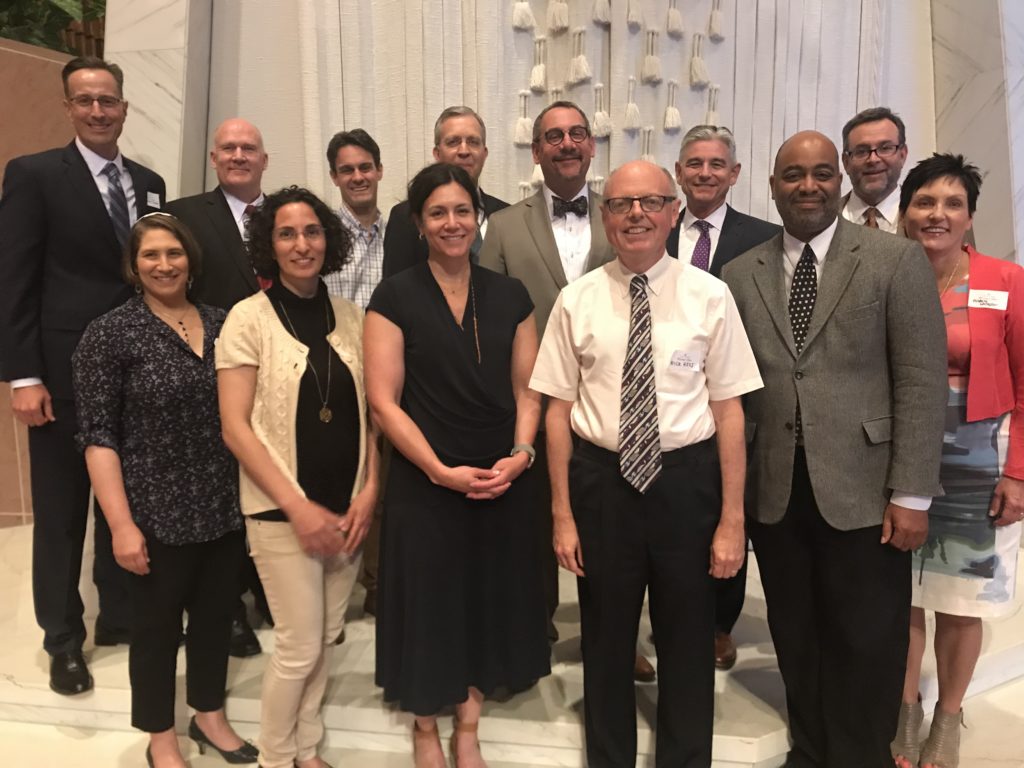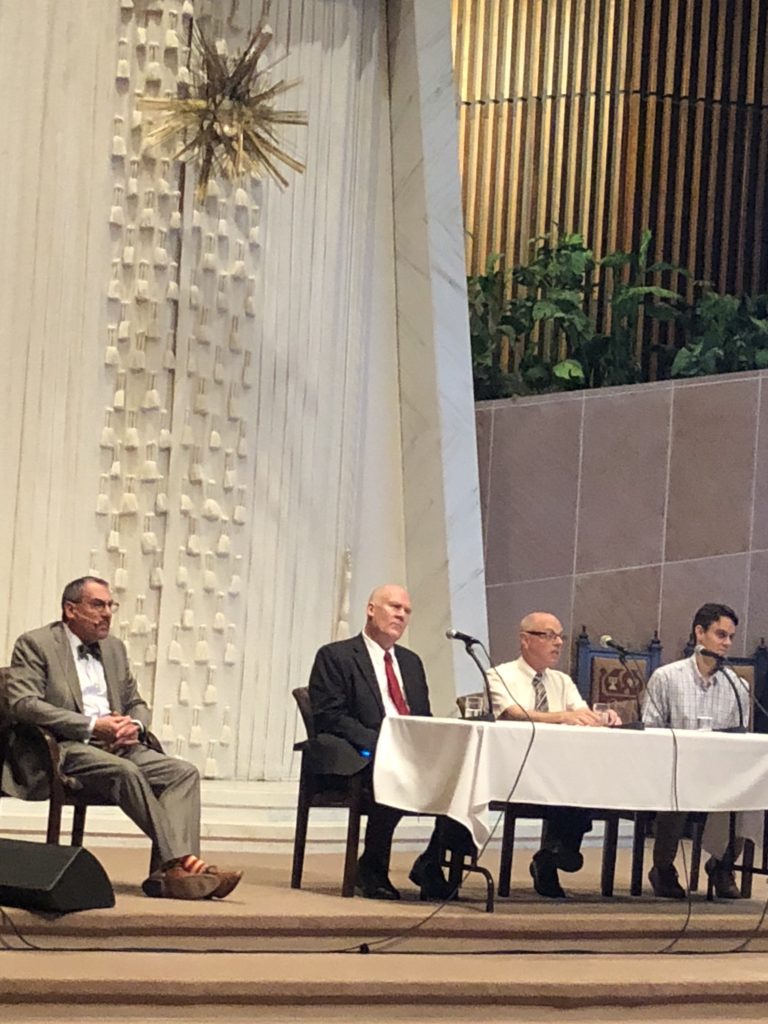Dead Sea Scrolls Bring Jewish and Mormon Faiths Together at Temple Emanuel
 On Thursday, June 21, hundreds of people gathered at Temple Emanuel for an evening of education and insight. The arrival of the Dead Sea Scrolls at Denver’s Museum of Nature and Science (DMNS) has seen popular attendance. It has also meant an influx of peripheral activities as people seek avenues to learn even more. Thursday’s event, brought about through the combined efforts of Colorado Council of Churches, JEWISHcolorado, Temple Emanuel and The Church of Jesus Christ of Latter-day Saints highlighted three experts, both local and out of state. Dr. Donald Parry, BYU professor of Hebrew Bible and Dead Sea Scrolls, Dr. Samuel Boyd, CU professor of Judaic Studies, and Dr. Rick Hess, professor and Old Testament scholar at Denver Seminary were the evening’s panelists.
On Thursday, June 21, hundreds of people gathered at Temple Emanuel for an evening of education and insight. The arrival of the Dead Sea Scrolls at Denver’s Museum of Nature and Science (DMNS) has seen popular attendance. It has also meant an influx of peripheral activities as people seek avenues to learn even more. Thursday’s event, brought about through the combined efforts of Colorado Council of Churches, JEWISHcolorado, Temple Emanuel and The Church of Jesus Christ of Latter-day Saints highlighted three experts, both local and out of state. Dr. Donald Parry, BYU professor of Hebrew Bible and Dead Sea Scrolls, Dr. Samuel Boyd, CU professor of Judaic Studies, and Dr. Rick Hess, professor and Old Testament scholar at Denver Seminary were the evening’s panelists.
While Dr. Hess gave an overview of the origins and discovery of the scrolls, he also taught about the caves, the Qumran community, and the translations as they tie into our current codex. Dr. Boyd shared his passion for the Bible and how the scrolls influence our understanding of it. Of the thousands of scrolls and fragments found and translated, a portion of them are Biblical text, another portion are commentary on the text, while a third portion are writings related to the day. Between all of these sources, Dr. Boyd taught that what we understand about the Bible still leaves a lot of room for learning.
Dr. Parry rounded out the presentations sharing both his experience with translating the scrolls and his expertise over decades of research. The topic Dr. Parry chose to focus on was the high import the Jewish community placed on the Lord. After factoring out connecting words like and, the, to, for, etc., based on high-frequency words in the Hebrew Bible, the first content word that is seen the most is the word Lord. That being said, because of the sacred nature of the divine name, readers will see divine name avoidance in the non-biblical Qumran texts. Between both the high frequency appearances of the word Lord, and the countless times the Lord is referenced but without use of the divine name, Dr. Parry taught that we can start get a feel for how sacred and important the Lord is in Jewish religion.
Susie Moss, a member of Temple Emanuel and Advancement Manager at DMNS said of the event, “It was a wonderful turnout with many different religious philosophies and practices coming together around a common archaeological finding. Personally, I enjoyed seeing such interfaith inspiration.”
The interfaith camaraderie carried the night. Following the speaker’s presentations, Rabbi Black moderated a Q&A between audience members and panelists. When asked how their study of the scrolls has influenced each of their individual faiths and practices, all made reference to the similarities in our religions, and the consistency of practice we see in those devoted to God. Audience members shared enthusiasm for the subject by continuing with questions until late in the evening. All were able to continue chatting at a reception afterwards, where many people expressed delight over both the interfaith opportunity and what they had learned.
Karen LaCouture, Denver Area Interfaith Director for The Church of Jesus Christ of Latter-day Saints was very pleased with the night’s event. She said, “It was fantastic evening! Not only are the findings and stories about the Dead Sea Scrolls fascinating, but it gave us a forum to come together from different faith traditions – with common interests. I believe that any time we can come together, unified by goodwill and focusing on things we have in common, it is a big win for all of us.”

